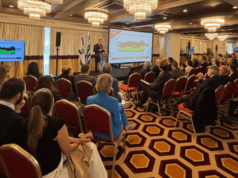 A knife is not a weapon unless someone intends to use it as such
A knife is not a weapon unless someone intends to use it as such
Anti-terrorist security measures must place greater emphasis on detection of intent rather than detection of means. This was the key message given to delegates at today’s Transport Security Expo & Conference at Olympia, London, by Nick Mower, ERA’s General Manager Technical Services.
As full-body scanners are rolled out at airports across Europe, many concerns have already been raised over health and privacy issues. Mower points out that new technology aimed at detecting explosive materials is not only expensive, and may not therefore be available at all airports, but is merely applying another layer of dressing to a bleeding wound without addressing the root cause. “It is not the weapon that’s dangerous, but the intention of the person using it,” said Mower. “Basic passenger profiling techniques cost nothing and can tell you much about the intent of that passenger and whether they are likely to pose a threat. Yet frequent travellers will be able to testify how often you can pass through airport security without even making eye contact with security agents.”
The new EU baseline security legislation that came into effect in April of this year and which replaces previous legislation implemented post 9-11, is intended to provide greater transparency and harmonisation of security measures across Europe. However, it does not preclude more stringent measures being applied by different European states. Mower explains: “ERA has long advocated common ‘one-stop’ security procedures across Europe. However, different levels of threat and risk exist between states and these naturally work against a wholly harmonised process. The procedure should be proportionate to the risk and deliver a quantum improvement in detection capability in order to avoid unnecessary costs and a negative impact on the facilitation of passengers through airport security. It is arguable, for example, that the airport security process for a flight from Europe to the USA is undertaken against a far higher threat level than an inter-island operation using a 30-seat turboprop in the Nordic region.”
“Airport security has a thoroughly bad reputation among air travellers, and the inconvenience of intrusive body searching may lead some passengers to choose alternative modes of transport which have less intrusive security procedures. More thought must be applied to the practicalities of moving passengers through security at airports and the actual passenger experience of this process. A complete rethink in the way security measures are approached and a much higher level of cooperation and communication between all stakeholders, including international intelligence and law enforcement agencies, is required.”











